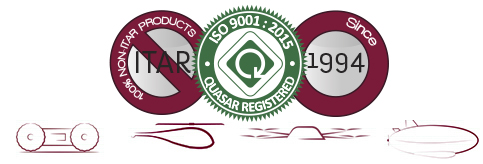The Iturralde Crater Expedition 2002 (ICE 2002)
Another NASA Project for Manitoba based MicroPilot
A Canadian High Tech Success Story
December 10, 2002
Background
In perhaps the remotest and wildest part of the Bolivian Amazon, in an area 300 km from the closest town, NASA scientists ventured into the jungle to try and uncover the origin of an 8 km crater, known as the Iturralde Crater.
Although the structure was identified on satellite photographs in the mid-1980s, its location is so remote that scientific investigators have only visited it twice, once in 1998 and now just recently in September 2002.
Iturralde Crater Expedition 2002 (ICE 2002)
The Iturralde Crater Expedition 2002 was an expedition by jet airliner, small airplane, boat, dugout canoe, and a 15 km hike through the jungle to determine if the unusual circular crater was created by a meteor or comet. Organized by Dr. Peter Wasilewski of NASA’s Goddard Space Flight Center, Greenbelt, Maryland, the Iturralde Crater Expedition 2002 was led by Dr. Tim Killeen of Conservation International, which is based in Bolivia. In addition, Dr. Compton Tucker of NASA/Goddard assisted Killeen.
The team planned to collect and analyze rocks and soil, look for glass particles that develop from meteor impacts, and study magnetic properties in the area to determine if the Iturralde site was indeed created by a meteor.
MAGnetometer PLANE-MAGPLANE
To remotely collect data of the magnetic signature in and around the crater, an unmanned aerial vehicle (UAV) called the MAGPLANE was added to the expedition. The MAGPLANE is a one-third scale, remote controlled model of a 1930 Piper Cub airplane. With a wingspan of about 12 feet it was outfitted with Flux Gate Magnetometer, an onboard computer, Global Positioning System, MiniDigital Video Camera, satellite communication system and an autopilot system by MicroPilot.
The Role of MicroPilot
The mission -- to launch the MAGPLANE from a dirt runway at Puerto Araona and fly approximate 30 km to the Iturralde Crater and back.
The operator was supposed to remotely fly the takeoff. After an in-flight checkout, the remote system was to be turned off and the MicroPilot MP 2000 autopilot was to fly the plane through the pre-programmed flight path at an altitude of about 200 ft. The instruments were to record the magnetometer data and simultaneously transmit the data via satellite for researchers in Bolivia and the United States. To complete the mission, the MicroPilot MP 2000 would pilot the MAGPLANE back, where an operator would reclaim remote control and land the plane.
In summary for takeoff and landing the MAGPLANE was under remote control. However, in flight it was technology of MicroPilot MP 2000 autopilot that would pilot the MAGPLANE over the wilds of the Bolivian Amazon.
Unfortunately due to the rain and bad runway conditions the flight plans changed. Instead the MAGPLANE flew short- range, not the long- range flights as originally planned. Delayed but still determined, NASA scientists plan to return next year into the depths of the Bolivian Amazon and try once again to unearth the origin of the Iturralde Crater.
Dave Wakeman, Business Development Manager, MicroPilot:
"MicroPilot is pleased to be part of the Iturralde Crater Expedition. This is our second project with NASA and once again our autopilot performed to meet all expectations. Next year when NASA returns to the Bolivian Amazon, MicroPilot and the MP2000 autopilot will again be part of the mission."
Read latest news | Back previous page

